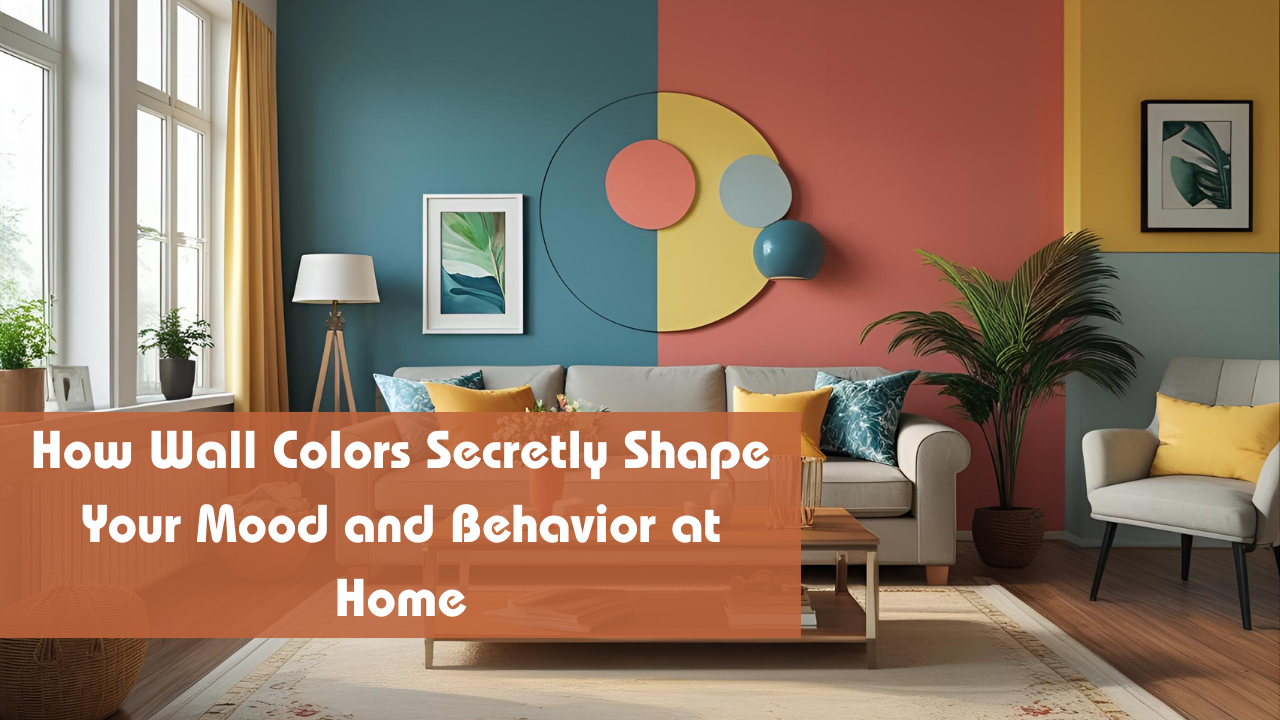Ever walked into a room and immediately felt calm—or strangely anxious? That’s no accident. The colors surrounding you play a huge role in shaping your thoughts, emotions, and even behaviors. In interior design, understanding color psychology helps you create spaces that influence how you feel and function. Whether you’re painting a cozy bedroom or a high-energy kitchen, knowing how wall colors affect mood can dramatically transform your home’s atmosphere and your daily life.
Overview: Psychological Impact of Wall Colors
| Color | Emotional Effect | Best Used In | Boosts | Avoid If… |
|---|---|---|---|---|
| Blue | Calming, peaceful | Bedroom, Study | Sleep, focus | You need energetic stimulation |
| Red | Stimulating, passionate | Dining Room, Gym | Appetite, energy | You’re prone to stress |
| Yellow | Cheerful, optimistic | Kitchen, Entryway | Positivity, warmth | Used in large, intense doses |
| Green | Balanced, restful | Living Room, Office | Calm, concentration | You want a more dramatic vibe |
| Purple | Creative, luxurious | Bedroom, Meditation Room | Imagination, calm | Too dark or cold in small rooms |
| Grey | Neutral, grounded | Bathroom, Office | Sophistication, focus | Can feel dull if overused |
| White | Clean, fresh | Any room | Clarity, space | Feels sterile if too stark |
| Black | Powerful, dramatic | Accent walls, Study | Depth, elegance | Overwhelming in full coverage |
| Orange | Energetic, social | Game Room, Gym | Activity, creativity | Can be too loud for relaxing |
| Pink | Comforting, romantic | Bedroom, Nursery | Compassion, joy | Too sweet or childish for some |
Blue – The Color of Tranquility
Blue slows your heart rate and lowers blood pressure, making it one of the best wall colors for reducing stress and promoting sleep. Lighter blues evoke serenity, while darker shades offer depth and sophistication.
Use In: Bedrooms, studies, bathrooms
Best For: Stress relief, mental clarity
Red – The Bold Motivator
Red stimulates energy and excitement. It increases heart rate and boosts adrenaline levels, making it ideal for spaces where activity and interaction are encouraged.
Use In: Dining rooms, home gyms
Best For: Energy, appetite, social spaces
Yellow – Sunshine Indoors
Yellow is linked to happiness and optimism. It can make a room feel bright and cheerful, but too much intensity may lead to irritability in overstimulated environments.
Use In: Kitchens, breakfast nooks, hallways
Best For: Boosting mood, creating warmth
Green – The Great Balancer
Associated with nature and harmony, green has a soothing effect while enhancing focus. It’s an excellent choice for multi-functional spaces.
Use In: Living rooms, home offices
Best For: Rest, stability, decision-making
Purple – The Imaginative Luxury
Purple, especially in lighter shades like lavender, inspires creativity and luxury. It calms the mind while encouraging introspection.
Use In: Meditation rooms, bedrooms, reading corners
Best For: Creativity, spiritual focus
Grey – The Sophisticated Neutral
Grey promotes calm and helps eliminate distractions, making it a favorite for modern interiors. But when overused, it can feel cold or lifeless.
Use In: Offices, bathrooms, minimalist spaces
Best For: Focus, neutrality, grounding
White – The Blank Canvas
White promotes clarity and openness. It reflects light and makes small spaces appear larger. However, stark white can feel sterile without warm accents.
Use In: Any room
Best For: Cleanliness, simplicity, versatility
Black – Bold and Beautiful
Black exudes strength and drama. When used correctly, it can add elegance and luxury. As a full wall color, it should be balanced with lighter shades.
Use In: Accent walls, media rooms
Best For: Power, formality, contrast
Orange – The Social Spark
Orange increases enthusiasm and excitement. It encourages communication and activity, making it great for informal and creative spaces.
Use In: Playrooms, home gyms, casual dining
Best For: Motivation, sociability
Pink – Soft and Comforting
Soft pinks are nurturing and gentle, ideal for creating relaxing and safe environments. Deeper pinks can bring sophistication and energy.
Use In: Bedrooms, nurseries
Best For: Comfort, affection, emotional warmth
Pro Tip: Test Before You Paint
Colors change drastically with lighting. Always test your chosen color in natural daylight and artificial lighting at different times of the day before finalizing.
Conclusion
Your walls do more than just define space—they influence your emotions, productivity, and overall well-being. By understanding the psychology of color, you can design interiors that align with your personal goals and lifestyle. Whether you’re seeking serenity, stimulation, or balance, there’s a color that fits your needs. Let your walls speak—and let them support the life you want to live.
FAQ’s
Q: Which wall color is best for reducing stress?
Cool blues and soft greens are best for calming the mind.
Q: Can wall colors really affect how I feel?
Yes, colors influence mood, behavior, and even energy levels.
Q: What’s the most versatile color for any room?
White and soft greys are timeless, neutral, and adaptable.

